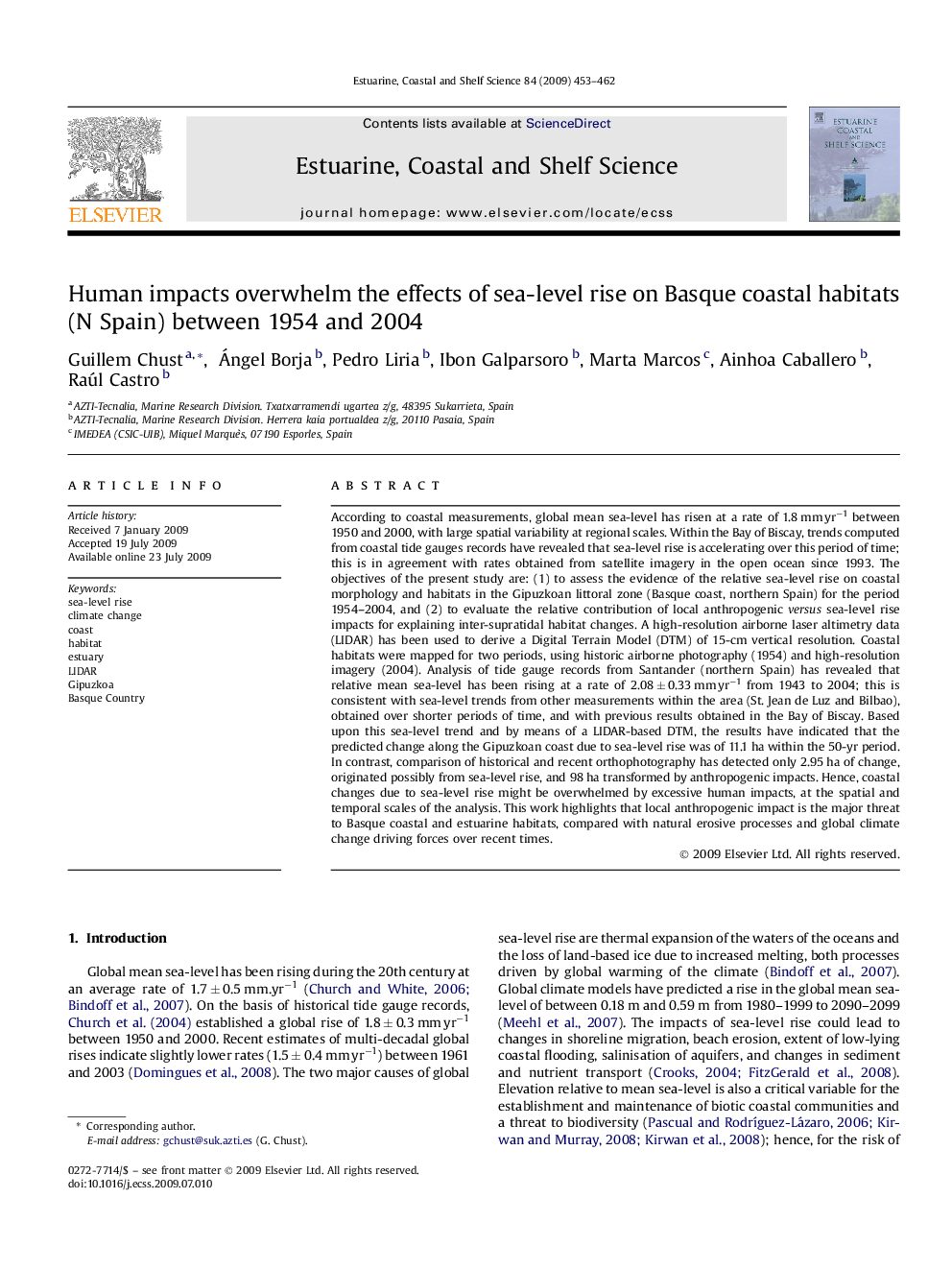| Article ID | Journal | Published Year | Pages | File Type |
|---|---|---|---|---|
| 4541171 | Estuarine, Coastal and Shelf Science | 2009 | 10 Pages |
According to coastal measurements, global mean sea-level has risen at a rate of 1.8 mm yr−1 between 1950 and 2000, with large spatial variability at regional scales. Within the Bay of Biscay, trends computed from coastal tide gauges records have revealed that sea-level rise is accelerating over this period of time; this is in agreement with rates obtained from satellite imagery in the open ocean since 1993. The objectives of the present study are: (1) to assess the evidence of the relative sea-level rise on coastal morphology and habitats in the Gipuzkoan littoral zone (Basque coast, northern Spain) for the period 1954–2004, and (2) to evaluate the relative contribution of local anthropogenic versus sea-level rise impacts for explaining inter-supratidal habitat changes. A high-resolution airborne laser altimetry data (LIDAR) has been used to derive a Digital Terrain Model (DTM) of 15-cm vertical resolution. Coastal habitats were mapped for two periods, using historic airborne photography (1954) and high-resolution imagery (2004). Analysis of tide gauge records from Santander (northern Spain) has revealed that relative mean sea-level has been rising at a rate of 2.08 ± 0.33 mm yr−1 from 1943 to 2004; this is consistent with sea-level trends from other measurements within the area (St. Jean de Luz and Bilbao), obtained over shorter periods of time, and with previous results obtained in the Bay of Biscay. Based upon this sea-level trend and by means of a LIDAR-based DTM, the results have indicated that the predicted change along the Gipuzkoan coast due to sea-level rise was of 11.1 ha within the 50-yr period. In contrast, comparison of historical and recent orthophotography has detected only 2.95 ha of change, originated possibly from sea-level rise, and 98 ha transformed by anthropogenic impacts. Hence, coastal changes due to sea-level rise might be overwhelmed by excessive human impacts, at the spatial and temporal scales of the analysis. This work highlights that local anthropogenic impact is the major threat to Basque coastal and estuarine habitats, compared with natural erosive processes and global climate change driving forces over recent times.
